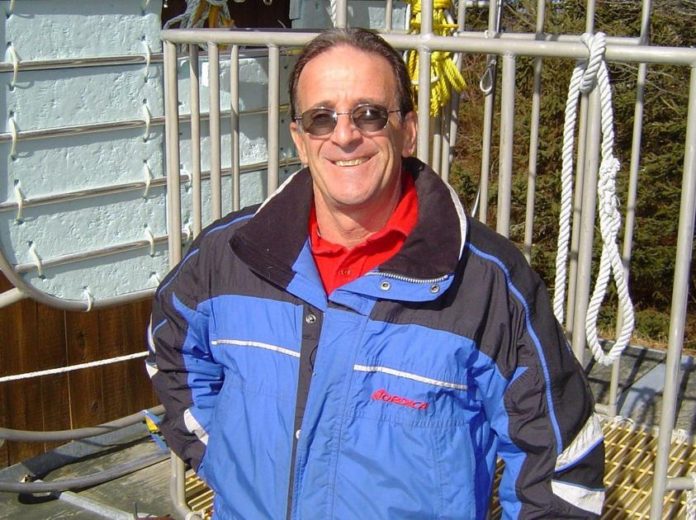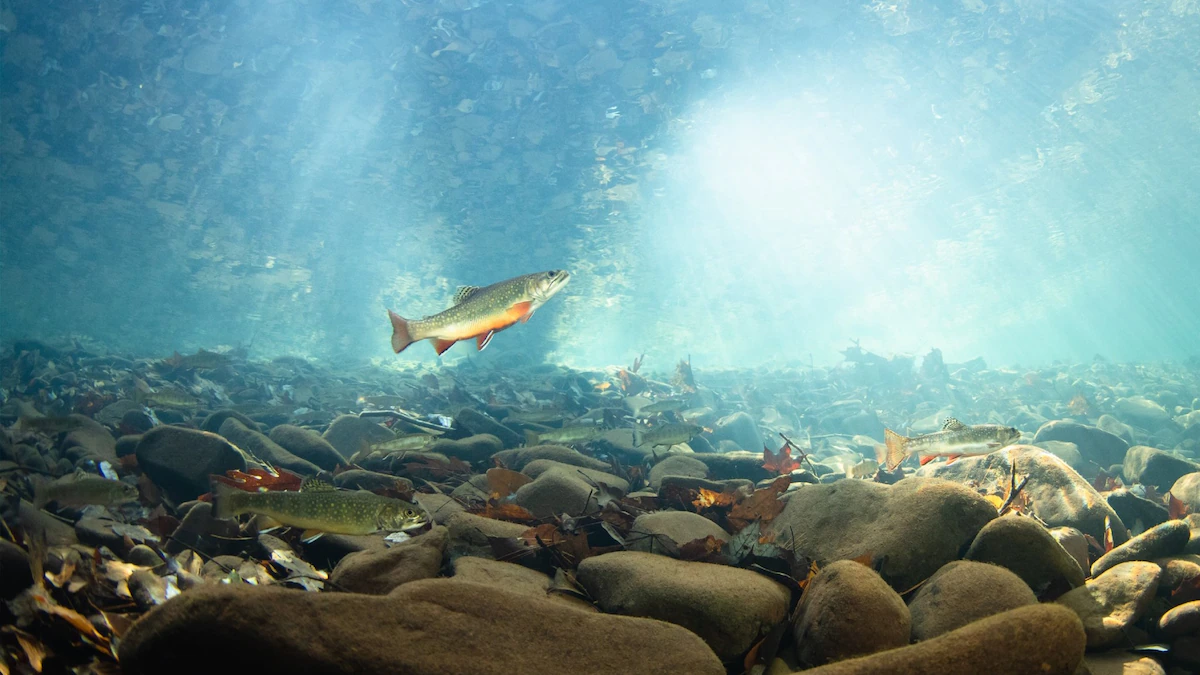“When I retired, they made me a T-shirt that read ‘Stripers and Diapers’ — stripers because they are my focus most days,” said ‘East End’ Eddie Doherty. “I go to the Cape Cod Canal to fish every day when they are here. And, diapers because at the time, I had five grandchildren all still in diapers.”
Doherty, an expert Cape Cod Canal shore angler and author, was the guest speaker at a Rhode Island Saltwater Anglers Association online seminar Tuesday night.
Here are some highlights from his presentation:
When deciding to fish he assesses three criteria —he wants to be fishing at first light as feeding occurs then; he prefers a low tide so he can get out further and see lobster pot lines and traps; and third, he prefers an east tide (meaning it is flowing to the east).
Doherty uses a number of lures, but his favorite soft plastic is a (Bill) Hurley Canal Killer in white.
Hurleycasts up-current, the lure sinks toward the bottom and the line tightens, then after it passes, he works it back against the current, creating a lot of wiggle action. Strikes often come as he works the lure back).
Ed’s parting suggestion?
“Get there early to pick a spot as things are often crowed in peak season when the bite is on,” he said. “I usually like to fish the mainland side but often fish the Cape side when things are too crowed.”
Fishinar Series on pelagic fishing
There is still time to register for the free Ørsted Fishinar Series on pelagic fish being held Wednesday at 7 p.m. via Zoom. Learn to target tuna, mahi, sharks and other pelagic fish in the near offshore with Capt. John McMurray, One More Cast Charters; Capt. Charlie Donilon, Snappa Fishing & Diving Charters; and Dick Pastore, expert pelagic fish angler/RISAA member. Supply Ørsted, wind farm developer, with valuable input, learn about the reef effect at the Block Island Wind Farm, and fish abundance in European wind farms.
Climate change fish stock movement, allocation changesLast month, the National Oceanic & Atmospheric Administration, in conjunction with Russian scientists, released a study that linked warming Arctic temperatures, changing wind patterns and shifting currents brought on by climate change to movement of commercially valuable Alaskan pollock in the Bering Sea.
“To get an accurate assessment of pollock abundance so that resource managers can set sustainable catch limits, we have to be able to understand pollock distribution, which certainly looks different under a warm water regime,” said Robert Foy, NOAA’s Alaska Fisheries Science Center director.
In Massachusetts and Rhode Island, the fish and abundance of fish we catch today are different than the fish we caught 10 years ago due to climate change impacts. Warmer-water fish such as black sea bass, summer flounder and scup are here today in abundance. They are now an integral part of my charter business.
Fish, like summer flounder, moving north have created havoc with allocation issues particularly in our commercial fishery. Mid Atlantic boats that have the quota, but no fish in their waters, so they have moved up the coast to fish. And New England boats have the fish, but little allocation. And, the sad news is that cold water fish such as winter flounder, American lobster and cod have gone to cooler and deeper water north and offshore.
Equitable solutions need to be worked out. We need a plan and to put tools in place so shifting stock issues due to climate change impacts can be addressed. We need to address this issue of shifting stocks so the fisheries in our region have a future.
Last month, I participated in an Environmental Defense Fund sponsored roundtable discussion on ‘Adjusting fishery management as stocks shift’. The workshop discussed the thorny issue of identifying shifting stock allocation options. The workshop’s goal was to build a consensus or provide solution directions that can be sent to fisheries decision-makers to inform their efforts as they address spatial shifts in fish stocks. Key variables in quota allocation that were discussed included geographical shifts and historical catch. Output from the workshop has not been released yet.
When it comes to climate and fisheries, we need to continue doing the management practices we know are key parts of sustainability, like keeping fishing within Allocable Catch Limits (ACLs) and rebuilding overfished stocks. And, we need to make serious progress making our fisheries climate ready with new tools and approaches that are fair and take into consideration both historical catch as well as stock shifts.
Where’s the bite?
Tautog, cod and black sea bass: Capt. Frank Blount of the Frances Fleet said, “We were still able to put decent tautog catches together when able to get out this week. High hooks left with limit catches. Pool fish have been between 8-10 pounds. Cod fishing was also effected by the ground swell. The scup and sea bass did not care but the cod were keeping a low profile this week.”
Striped bass: Todd Corayer, expert light tackle/fly fishing angler and author ( www.fishwrapwriter.com) reports catching multiple striped bass in the slot range of 28 inches to less than 35 inches from his kayak in Salt Pond. “I was really taken by the size of the fish this weekend,” Corayer said. “I hope that’s a harbinger of a solid winter on the salt ponds. Stripers were feeding near the surface, even in deep water. Blue over silver herring imitation, like an SP Minnow or such with single hooks. No more treble hooks for this guy. In cold water, the water was 37 at sunrise then 41 at 9 a.m., removing a single hook takes far less time for a freezing cold fish gasping for air. Pearl or minnow colored plastics, three or four inches on 1/8 or 1/4 ounce jig head are killers right now. If that doesn’t work, cast something ridiculous, like gaudy green and pink or something similar.”
Dave Monti holds a captain’s master license and a charter fishing license. He is a RISAA board member, a member of the RI Party & Charter Boat Association, the American Saltwater Guides Association and the RI Marine Fisheries Council. Forward fishing news and photos to Capt. Dave at dmontifish@verizon.net or visit www.noflukefishing.com.
Credit: Source link






























